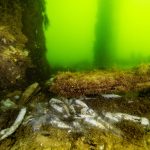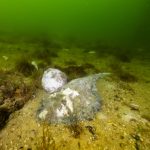What’s going on with the algal bloom in South Australia?
QUESTION
What’s going on with the algal bloom in South Australia?
ANSWER 1
Written response:
Understanding the Harmful Algal Bloom Affecting South Australia’s Coastline
South Australia is currently experiencing an unprecedented harmful algal bloom (HAB) across 100kms of coastline, with serious consequences for marine life, ecosystem health, and aquaculture and fishing industries. The species causing the algal bloom is Karenia mikimotoi, and it has led to widespread marine deaths, including fish, sharks, rays, dolphins, octopus, oysters, cockles, starfish, and a range of other species, and has also prompted temporary closures of some aquaculture farms and harvesting operations. The bloom started in March 2025 and the severity, spread, and duration has taken the marine community by surprise.
What’s Causing the Bloom?
Experts believe the bloom is the result of a combination of environmental factors that have created ideal conditions for algal proliferation:
- Marine Heatwave: Since July 2024, South Australia has been experiencing a marine heatwave, with sea surface temperatures significantly higher than average. Warmer waters support algal growth.
- Delayed winter weather and extended calm conditions has created a stable environment for algae to thrive in the relatively warm waters
- Excess nutrients from the 2022–23 River Murray flood introduced a large volume of nutrients into coastal waters. These nutrients act as a fertilizer for algae, accelerating their growth and contributing to the bloom’s intensity. The mass mortalities caused by the bloom is also adding further nutrients and carbon into the system.
Impact on Industry and Environment
The bloom is killing many types of marine animals from large carnivores to small invertebrates and filter feeders (e.g. spongers, oysters) and once thriving marine communities have now disappeared. It is a significant ecological disaster. Aquaculture and fishing industries have also been effected, leading to loss of jobs and livelihoods. While Karenia mikimotoi does not pose long-term risks to humans, exposure to affected waters can cause short-term skin, eye, and respiratory irritation.
What Can Be Done?
Although harmful algal blooms are naturally occurring and exacerbated by global climate change, there are constructive steps that individuals and communities can take to help protect our marine environments and ensure the long-term sustainability of our fisheries and aquaculture industries.
- Stay Informed: Regularly check updates from local authorities, such as PIRSA (https://pir.sa.gov.au/sardi/aquatic_sciences/marine_ecosystems/harmful_algal_bloom), as well as via the Great Southern Reef Foundation (https://greatsouthernreef.com/2025-algal-bloom-june-update) or community forums
- Report Sightings: Notify authorities of unusual marine life deaths or water discoloration to aid monitoring efforts, but avoid physical contact with dead or dying marine life. Also keep pets away from dead of dying animals.
- Take photos of different species and upload your observations to the citizen science databases iNaturalist using their dedicated page: https://www.inaturalist.org/projects/sa-marine-mortality-events-2025.
- Support Research: Engage with or support local marine research initiatives that study algal blooms.
- Practice Sustainable Land Use: Reducing nutrient runoff from agriculture and urban areas can help prevent future blooms.
*Photographs by Stephan Andrews courtesy of Great Southern Reef Foundation.
Supporting gallery:
Answered by:


